By Sean Pearson
Formation
The 3-4-3 is still not as popular as the 4-2-3-1 and the 4-3-3 mainly because not enough coaches know how to coach it and the higher profile teams generally don’t play it. That has changed this season with Chelsea’s dominance in the system from coach Antonio Conte. At international level Wales also play with a 3-4-3 system.
First of all, like most systems you must have the right players to play in the positions the system requires. For instance, if you do not have 2 extremely fit and athletic wingers who work tirelessly up and down and give everything for the team both defensively and offensively the system is probably not for your team. Likewise, if you have 3 excellent center backs and 2 work horse type center midfielders you might just want to try it.
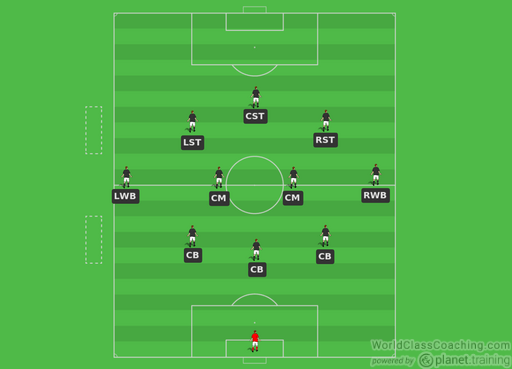
Flexibility of the 3-4-3
I like the formation because of its natural flexibility and strength in number for both attacking and defending. When defending deeply, in and around your own goal, your wing backs drop down into the full back position and your wide strikers drop down into the wing back position so it becomes a 5-4-1. Lots of men behind the ball and gives you an extra back line defender to mark the back post from crosses.
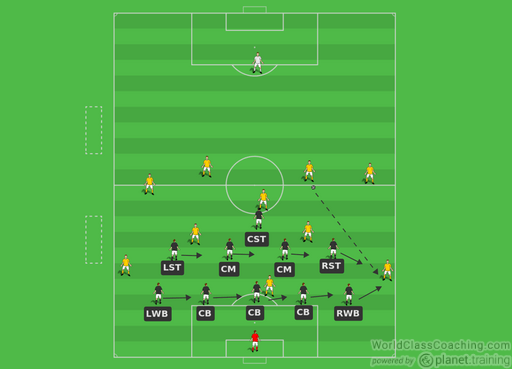
Just as important is the system’s ability to be able to press, with the front 3 leading, if you wanted to. Below is one way of pressing but with 3 forwards being slightly narrower than a 4-3-3 and the wing backs pushing up you are able to compact the area around the ball.
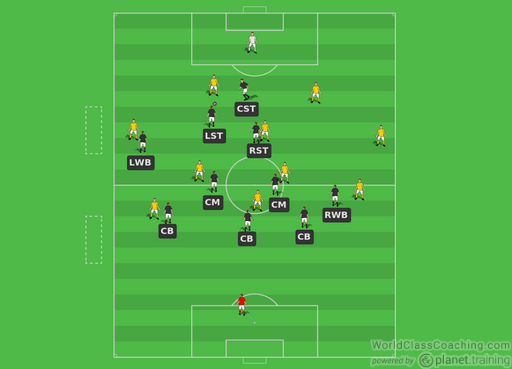
When coming forward with the ball, unlike the usual 2, the 3 CB gives opposing teams questions they are not familiar with to answer. (1) The CB can step forward and the CM can rotate in (2) The CB can play direct to the feet of the strikers because they are narrow and (3) if the opposing team is narrow the wing backs offer width to play around them.
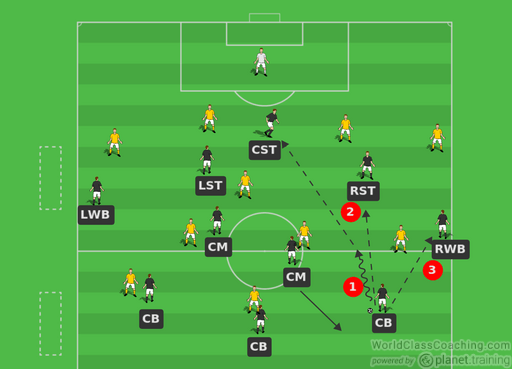
When the left and right striker are in possession of the ball this creates a problem for the opposing FB. Do they stay or go and engage? Either way the wing backs get forward to offer width and pull the defense wider so gaps appear between defenders (1). The other 2 strikers capitalize on this and can either make opposite runs (1 in 1 away) or both make similar runs but not to the same area (2).
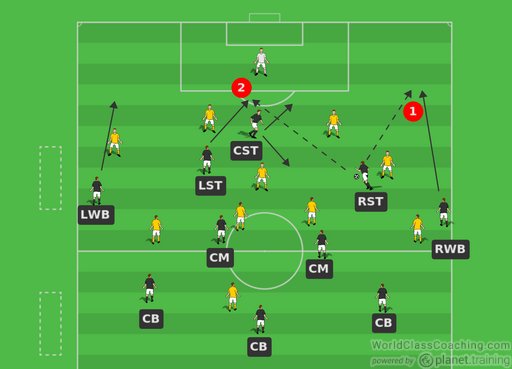
This tactical flexibility of the 3-4-3 allows for balance with 5 staying back (3 CB’s & 2 CM’s) and 5 going forward (3 STs & 2 WBS). As Chelsea have shown this season it can be very good defensively as they do not concede many goal and win games 1-0 or 2-0 on many occasions. You have to have the players though, this system need players who are extremely athletic and physically fit because of the demands of their role. If they are not, then gaps will begin to appear creating disorganized defending and giving opposition chances to take advantage of your players being out of position.
By Sean Pearson. Sean is also the author Coaching Team Shape in the 3-3-1, Coaching Team Shape in the 4-2-3-1 and Coaching Team Shape in the 4-3-3


